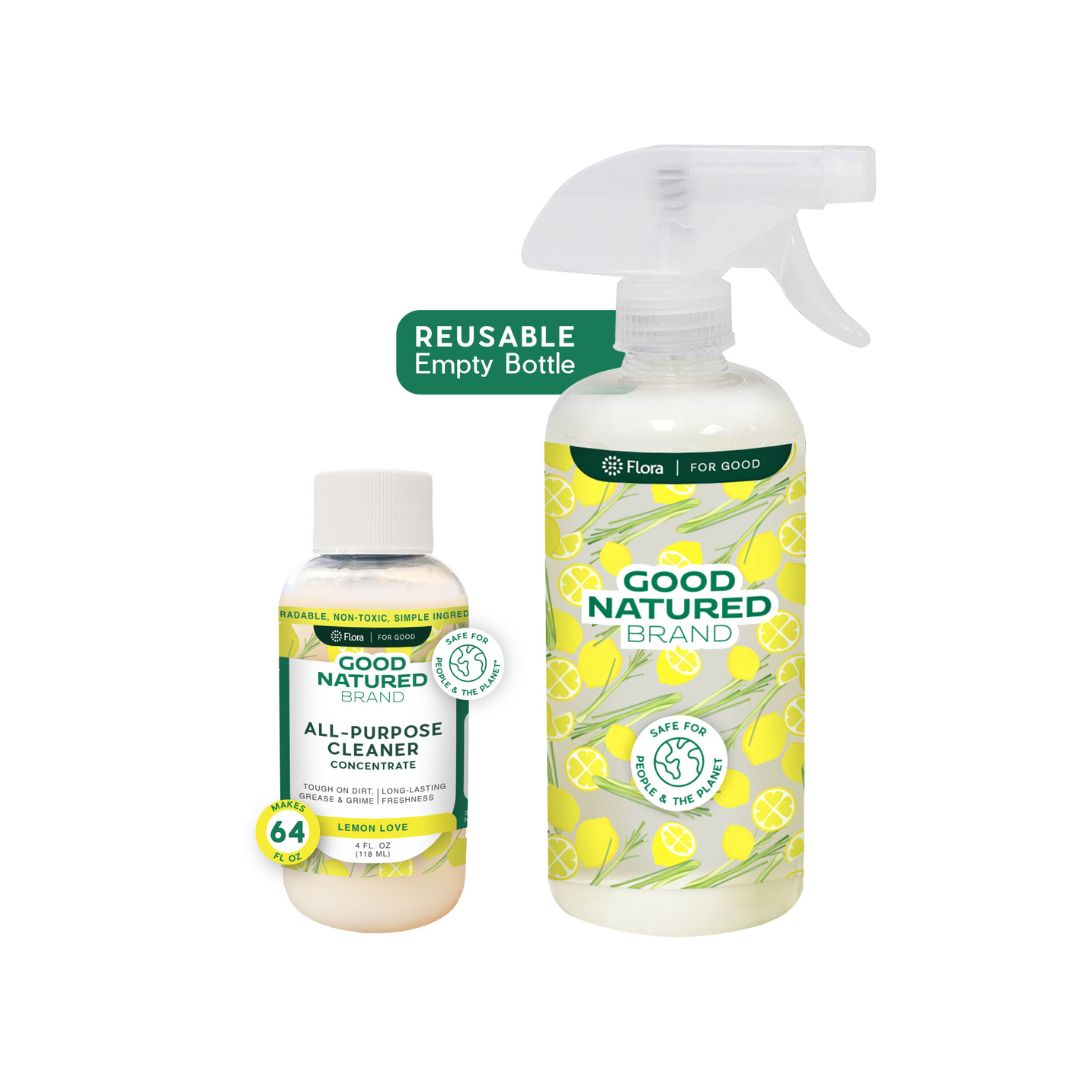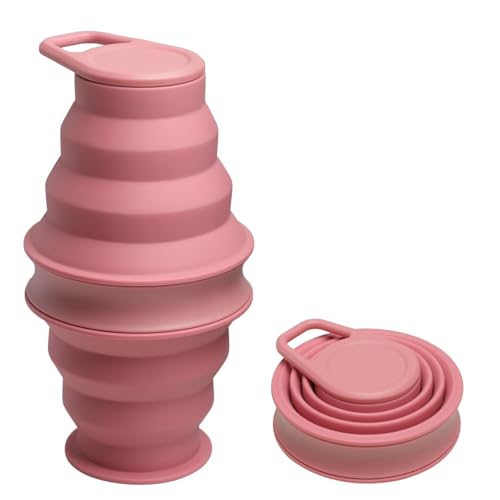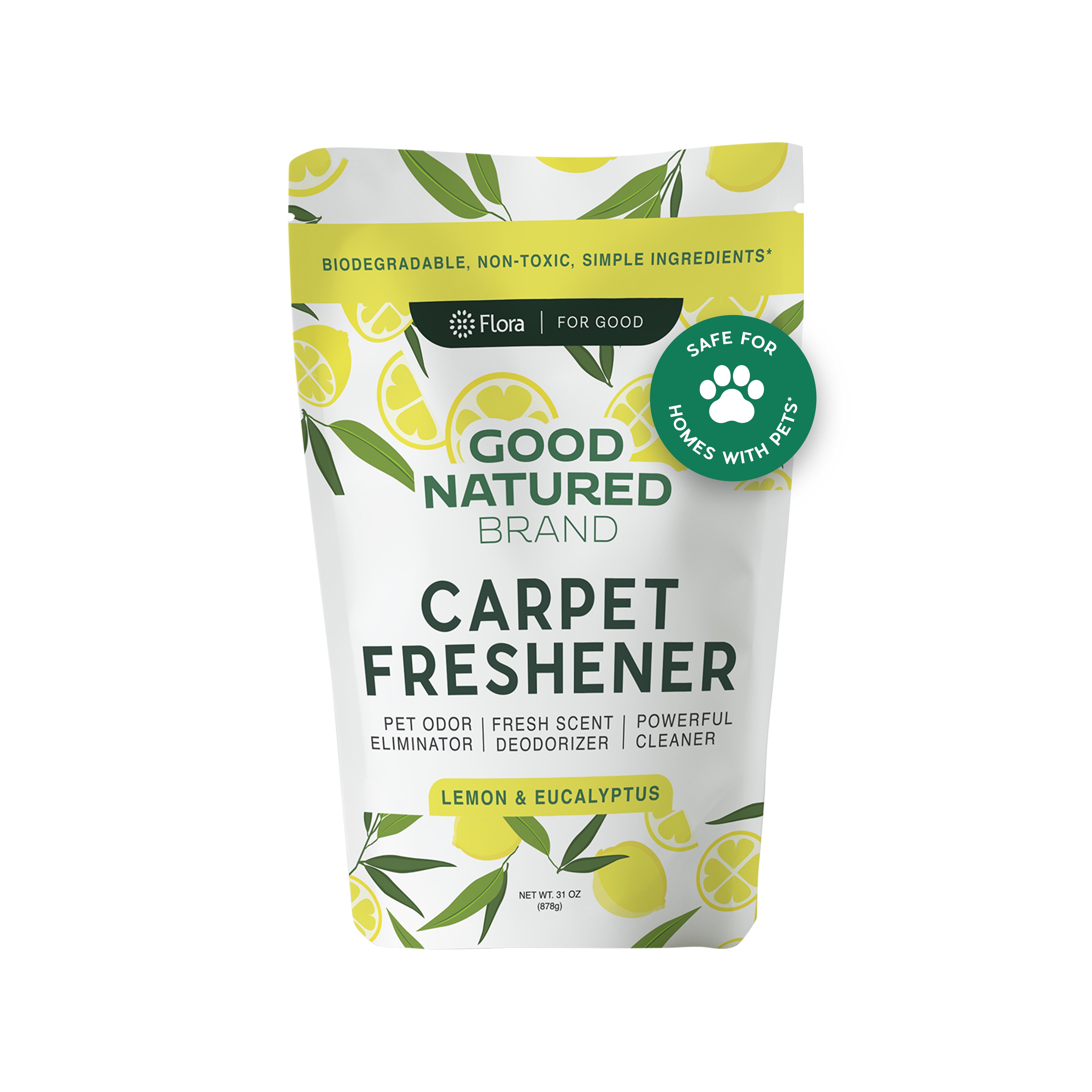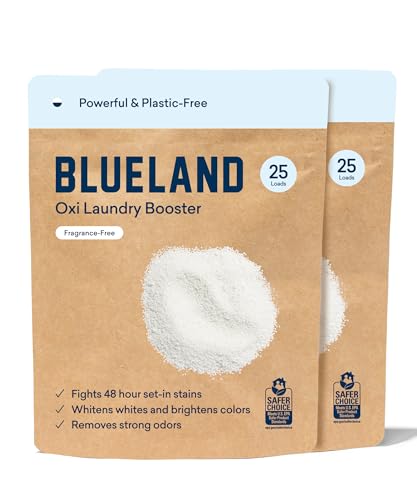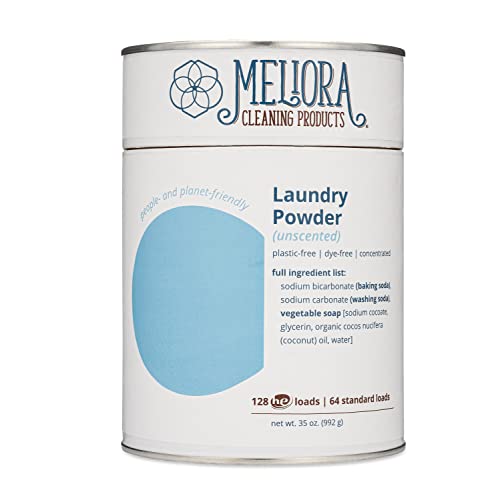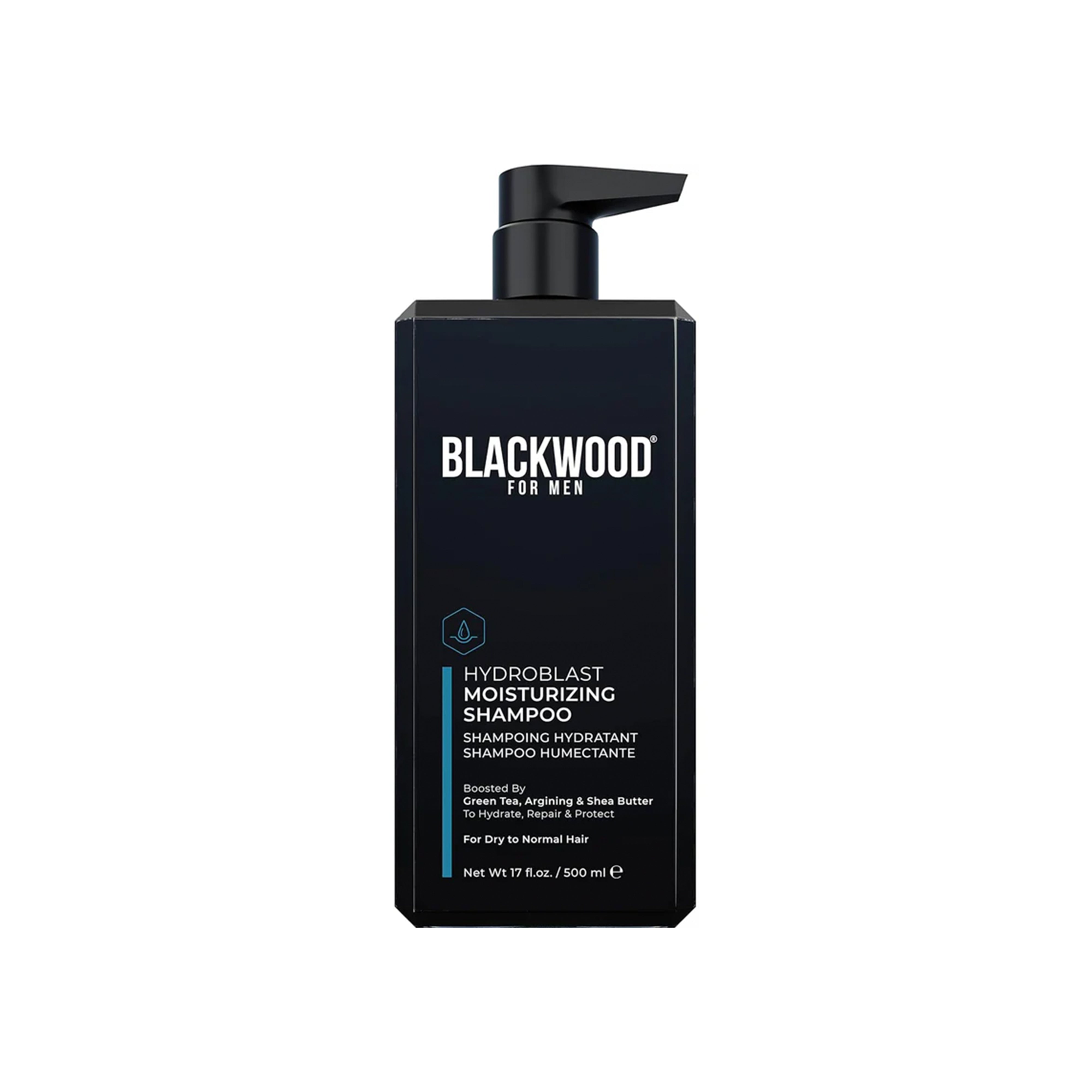
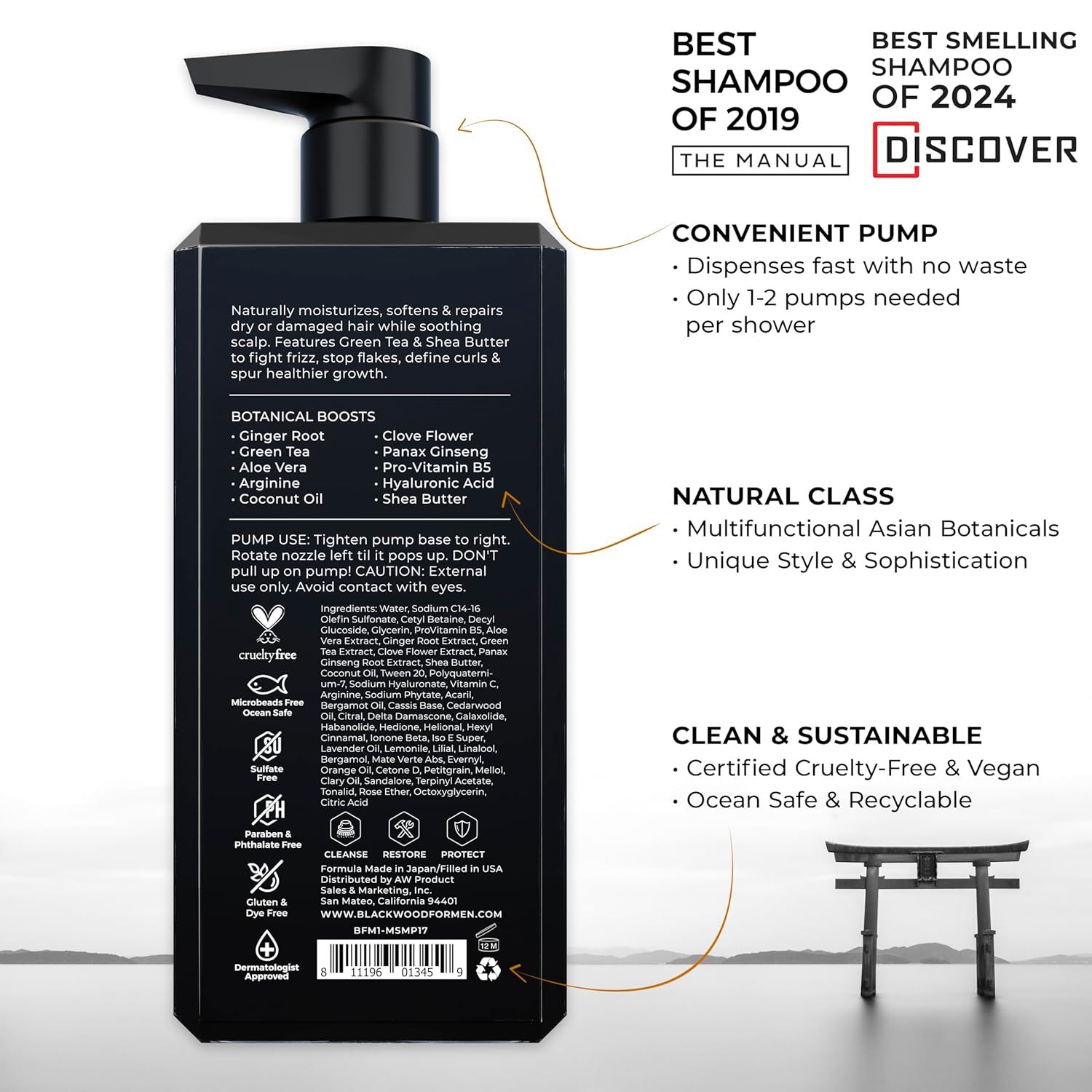
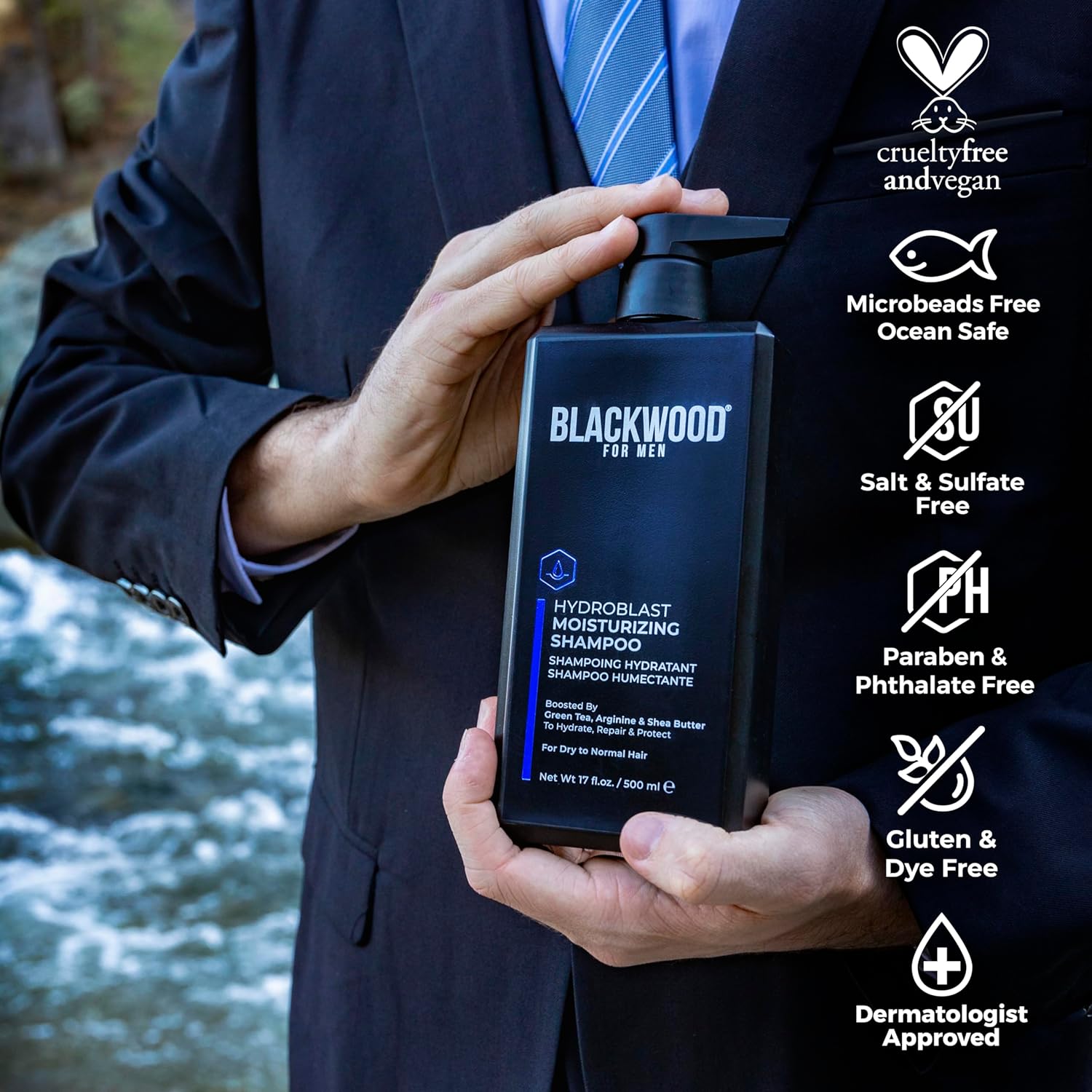
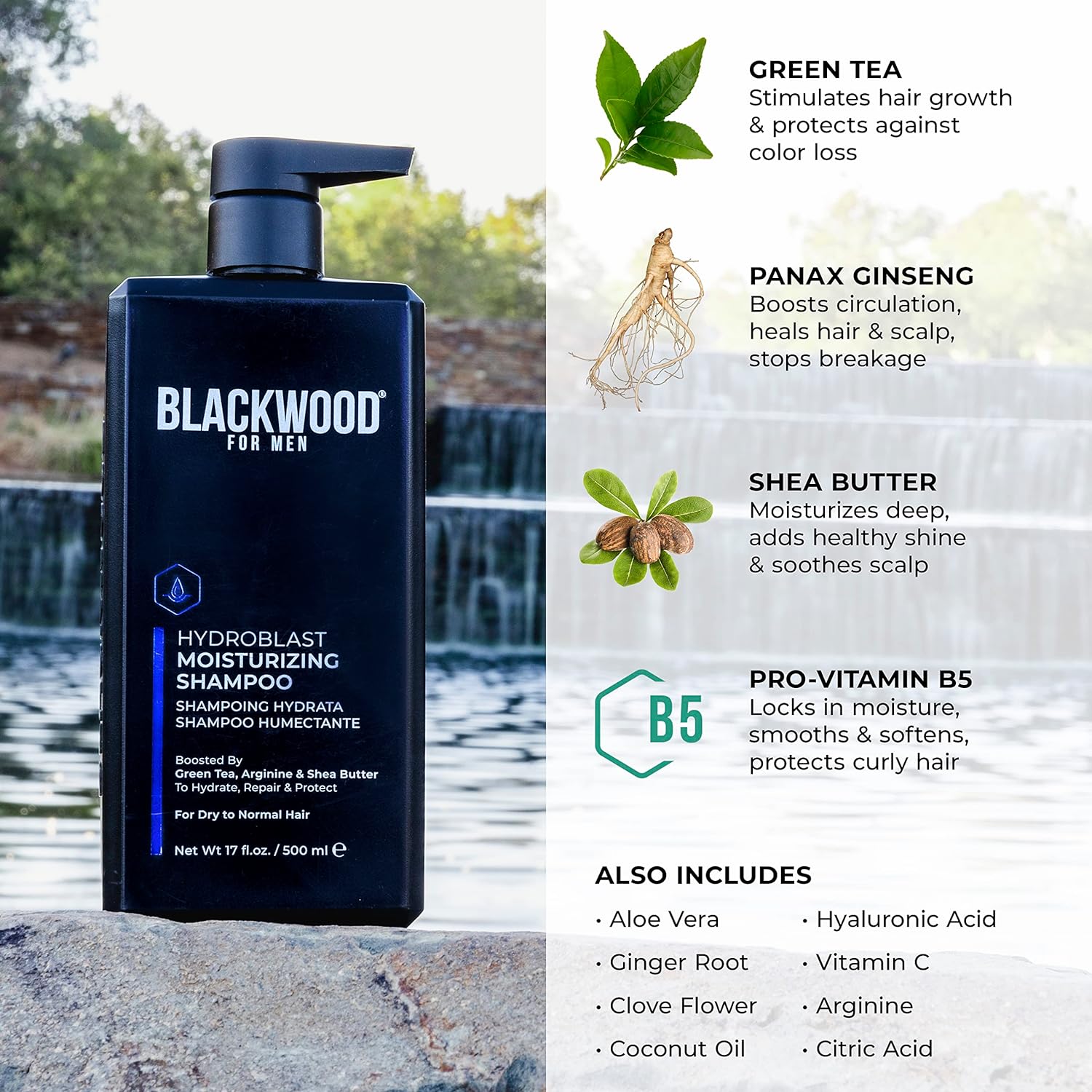
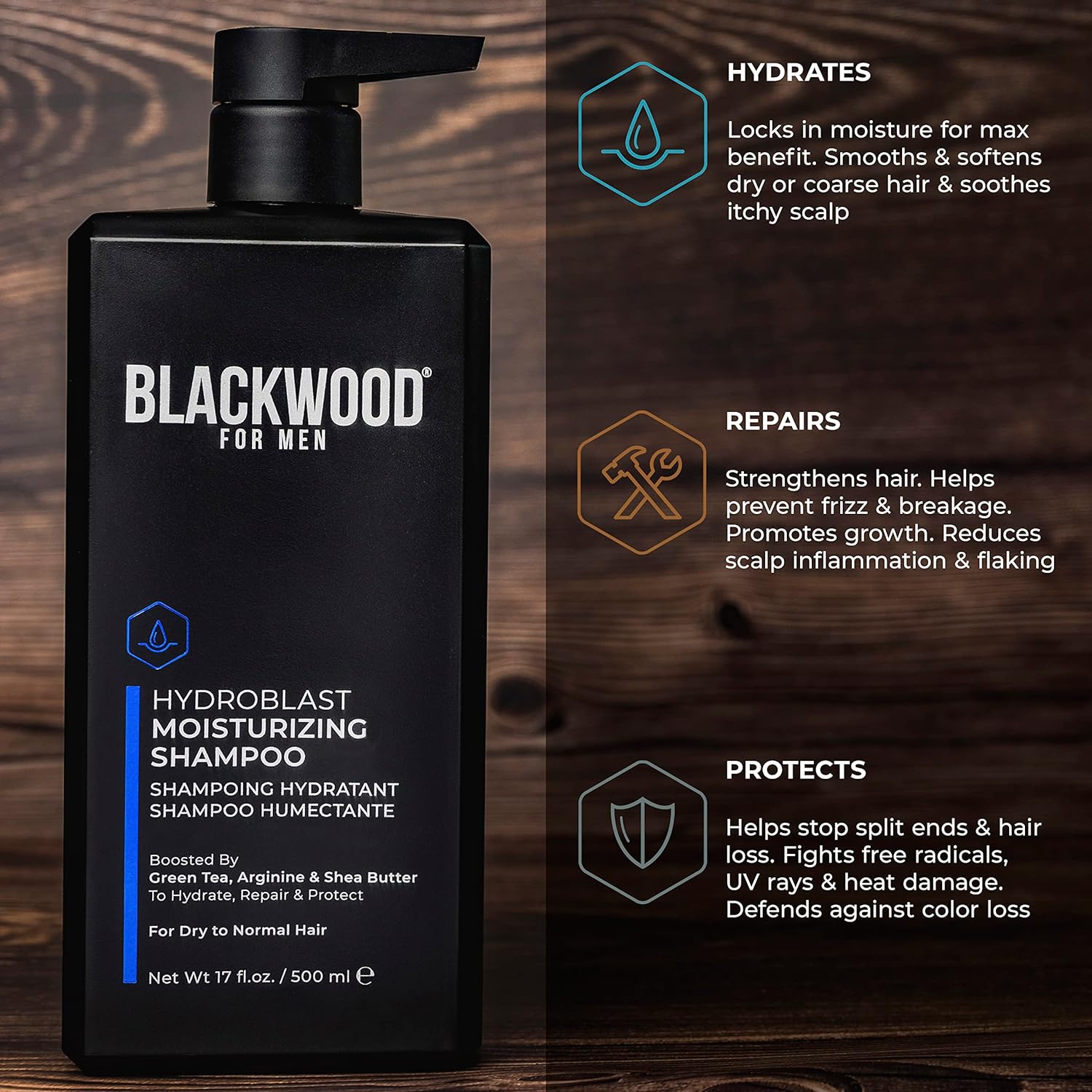
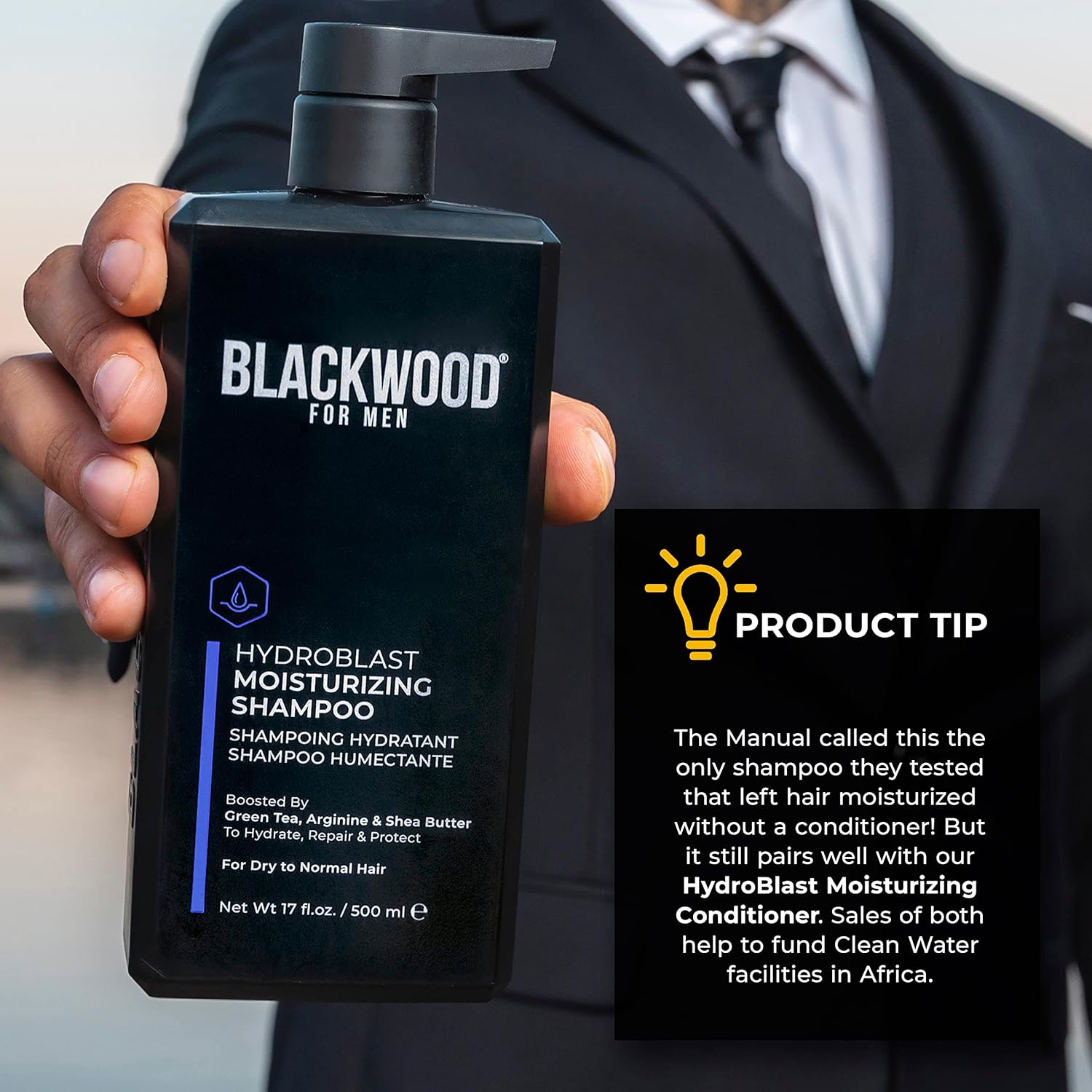
Blackwood For Men Shampoo - Moisturizes & Repairs Coarse, Curly Hair with Ginseng & Ginger - 17oz


Lilial
High RiskLilial (butylphenyl methylpropanal) is a synthetic fragrance ingredient commonly used in personal care and cosmetic products to provide a floral scent. It is known for its aromatic properties and is often included in formulations to enhance sensory appeal.
Sustai Insights
Lilial offers functional benefits as an effective fragrance component, enhancing the sensory experience of products. However, it poses significant health risks, including a high allergenic potential and concerns regarding endocrine disruption, despite lower risks for carcinogenicity and reproductive toxicity. Environmental risks include potential pollution and bioaccumulation. Regulatory bodies have raised concerns, resulting in high usage restrictions. Overall, the assessment indicates a high-risk level, suggesting caution in its use and consideration of safer or more sustainable alternatives.
Eugenia Caryophyllus (Clove) Flower Extract
High RiskEugenia caryophyllus (clove) flower extract is derived from the flower buds of the clove tree, primarily used for its aromatic properties and as a natural preservative in various products. It contains bioactive compounds that may contribute to its functional benefits.
Sustai Insights
Eugenia caryophyllus (clove) flower extract offers functional benefits such as antimicrobial properties and is known for its use in aromatherapy. However, it has a high allergenic potential and may cause irritation in sensitive individuals. While it is not associated with significant carcinogenic or reproductive toxicity risks, regulatory bodies have placed some restrictions on its use. Overall, the ingredient presents a high risk level due to its potential health impacts. Safe usage practices should be observed, and alternatives like essential oils with lower allergenic potential may be considered.
Citrus Aurantium Bergamia (Bergamot) Fruit Oil
High RiskCitrus aurantium bergamia (bergamot) fruit oil is a volatile oil extracted from the fruit of the bergamot orange. It is commonly used in various cosmetic and fragrance products for its aromatic properties.
Sustai Insights
Bergamot oil serves as a fragrant compound with potential benefits in aromatherapy and personal care formulations. However, it is associated with high allergenic potential, with risks of skin irritation and phototoxicity. Regulatory agencies have noted usage restrictions due to these concerns. While the oil is not classified as a carcinogen, it presents moderate risks overall. Caution is advised for sensitive populations, and safer alternatives like sweet orange oil may be considered.
Hexyl Cinnamal
High RiskHexyl cinnamal is a naturally occurring and synthetic fragrance ingredient used primarily for its pleasant floral scent. It is commonly found in personal care and cosmetic products, contributing to their aromatic profiles.
Sustai Insights
Hexyl cinnamal provides a desirable fragrance in cosmetic formulations, enhancing product appeal. However, it is associated with a high allergenic potential, posing risks of skin irritation and sensitization. While it is not classified as a carcinogen or reproductive toxin, its use is restricted in certain regions. Overall, the ingredient presents a high risk due to its allergenic properties, necessitating caution in formulations, especially for sensitive populations.
Linalool
High RiskLinalool is a terpene commonly found in various plants, particularly in lavender and mint. It is primarily used in products for its fragrance and potential antimicrobial properties. Linalool is also utilized in formulations for its ability to enhance the sensory experience of personal care and household products.
Sustai Insights
Linalool offers functional benefits as a naturally occurring fragrance component and may exhibit antimicrobial properties. However, it presents high allergenic potential, with concerns about skin irritation and sensitization. Environmental risks include contamination issues, though it is not classified as a persistent pollutant. Regulatory bodies have noted the need for careful handling due to its allergenic nature. Overall, despite some beneficial attributes, the ingredient carries a high risk profile, warranting cautious use and consideration of safer alternatives.
Geranial
Medium RiskGeranial is a naturally occurring compound found in essential oils, primarily derived from lemongrass. It is commonly used in fragrances and flavoring due to its lemon-like scent. Geranial acts as a fragrance component and is often included in personal care and cosmetic products.
Sustai Insights
Geranial offers functional benefits as a fragrance enhancer in various products. While it is generally well-tolerated, it has a moderate allergenic potential, and caution is advised for sensitive individuals. Environmentally, it does not appear to be bioaccumulative, but its use is restricted in some verified products. Overall, the risk level is assessed as medium, suggesting that while it is useful, careful consideration of exposure is warranted.
Citrus Aurantium Amara (Bitter Orange) Peel Oil
Medium RiskCitrus aurantium amara (bitter orange) peel oil is an essential oil extracted from the peels of the bitter orange fruit. It is often used for its aromatic properties and as a natural flavoring agent in various products, including cosmetics and food items.
Sustai Insights
Bitter orange peel oil offers functional benefits as a natural fragrance and may possess antimicrobial properties. However, it has a high allergenic potential, posing risks such as skin irritation and allergic reactions. Its environmental impact includes moderate persistence and potential for bioaccumulation. Regulatory restrictions exist for certain uses, leading to a medium risk assessment overall. Safe usage practices should be followed, and alternatives include other essential oils with lower allergenic profiles.
Hedione
Medium RiskHedione is a synthetic fragrance ingredient commonly used in cosmetics and personal care products. Its primary function is to provide a floral scent and enhance the overall fragrance profile of formulations.
Sustai Insights
Hedione offers functional benefits as a fragrance component, contributing to the sensory experience of products. It is not associated with significant health risks regarding carcinogenicity or reproductive toxicity, although its allergenic potential is moderate. Environmental concerns include its role as a potential pollutant, but it is not known to bioaccumulate. Regulatory status indicates it is permitted in cosmetics, with no current restrictions. Overall, the risk level is assessed as medium, and safe usage practices should be followed. Alternatives like natural floral extracts may provide similar sensory benefits.
Citric Acid
Medium RiskCitric acid is an alpha hydroxy acid used in personal care products primarily for its role as a pH adjuster and natural preservative. It occurs naturally in citrus fruits and is commonly utilized in various formulations for its chelating properties and mild exfoliation benefits.
Sustai Insights
Citric acid offers functional benefits as an effective preservative and pH stabilizer, contributing to product longevity and stability. It is biodegradable and derived from renewable sources. Health risks are low, with minimal concerns regarding carcinogenicity, allergies, and reproductive toxicity. However, moderate use restrictions exist due to potential irritation at high concentrations. Environmental risks are limited, as citric acid is not known to accumulate in ecosystems. Regulatory agencies have no significant advisories against its use. Overall, it is assessed as a medium-risk ingredient, with safe usage practices recommended and alternatives available.
E And Z Oxacyclohexadec 12(+13) En 2 One
Medium Riske and z oxacyclohexadec 12(+13) en 2 one is a chemical compound utilized in various cosmetic formulations. It serves multiple functions, such as acting as a stabilizer or enhancing the texture of products. Its inclusion is primarily for improving product performance and user experience.
Sustai Insights
This ingredient offers functional benefits in formulations, contributing to product stability and texture. However, concerns exist regarding its moderate allergenic potential and low risk of carcinogenicity. It poses low ecotoxicological risks, yet regulatory bodies do not classify it as particularly hazardous. Overall, the ingredient is assessed to carry a medium risk level, warranting careful usage recommendations and consideration of potential alternatives.
Galaxolide
Medium RiskGalaxolide is a synthetic musk fragrance commonly used in personal care and household products to impart a pleasant scent. It is known for its stability and long-lasting aroma, making it a popular choice in various formulations.
Sustai Insights
Galaxolide offers functional benefits as an effective fragrance component; however, it has been associated with high allergenic potential and low to moderate risks of endocrine disruption. Environmental concerns include its persistence and potential to bioaccumulate, prompting regulatory scrutiny. While it is not deemed a carcinogen, its usage is subject to restrictions in some regions. Overall, its risk level is assessed as medium, warranting cautious application and consideration of safer alternatives.
Sodium Phytate
Low RiskSodium phytate is a complex sodium salt of phytic acid, primarily used in cosmetic formulations as a chelating agent. It helps to stabilize formulations by binding metal ions, which can improve product efficacy and shelf life.
Sustai Insights
Sodium phytate offers functional benefits by enhancing product stability and is considered to have low health risks, with no significant associations with carcinogenicity, allergies, or reproductive toxicity. Environmentally, it poses minimal risks, as it is not considered a pollutant or bioaccumulative. Regulatory status indicates no significant restrictions. Overall, the ingredient is assessed as low risk. However, users should practice safe usage and consider alternatives like other chelating agents if desired.
Ascorbic Acid (Vitamin C)
Low RiskAscorbic acid (Vitamin C) is a naturally occurring antioxidant essential for various biological functions, including collagen synthesis and immune response. It is commonly used in cosmetic and food products for its preservative properties and ability to enhance skin brightness.
Sustai Insights
Ascorbic acid provides functional benefits as an effective antioxidant and preservative, contributing to skin health and product stability. It is generally recognized as safe with low health risks, including minimal concerns for carcinogenicity and allergies. Environmentally, it poses low risks, as it is biodegradable and does not bioaccumulate. Regulatory bodies like the FDA have not imposed significant restrictions on its use. Overall, the ingredient presents a low risk, with safe usage practices ensuring consumer safety, and alternatives such as natural extracts exist for those seeking different formulations.
1 (2,3,8,8 Tetramethyl 1,3,4,5,6,7 Hexahydronaphthalen 2 Yl)ethanone
Low Risk1,2,3,8,8-Tetramethyl-1,3,4,5,6,7-hexahydronaphthalene is a synthetic aromatic compound commonly used in fragrances and personal care products. It serves primarily as a fragrance ingredient, contributing to the scent profile of cosmetic formulations.
Sustai Insights
This ingredient provides aromatic benefits in cosmetic products and is not associated with significant health risks, as concerns regarding carcinogenicity, allergies, and reproductive toxicity are low. Environmentally, it exhibits low bioaccumulation potential. Regulatory bodies have not flagged it for serious concerns, resulting in an overall low risk assessment. Safe usage practices should still be maintained, and alternatives like natural essential oils may be considered for those seeking greener options.
Zingiber Officinale (Ginger) Root Extract
Low RiskZingiber officinale (ginger) root extract is derived from the ginger plant, widely recognized for its use in culinary applications and traditional medicine. It serves various functions in products, including flavor enhancement and potential therapeutic benefits due to its bioactive compounds.
Sustai Insights
Ginger root extract offers functional benefits such as flavoring and possible anti-inflammatory properties. It is sustainably sourced and biodegradable. Health risks are low, with minimal concerns regarding carcinogenicity, allergies, or reproductive toxicity. Environmental risks appear low, with no significant pollutants. Regulatory status is favorable, with no major warnings. Overall, the risk level associated with ginger root extract is low, making it a suitable ingredient in various applications.
Cocos Nucifera (Coconut) Oil
Low RiskCocos Nucifera (Coconut) Oil is derived from the kernels of the coconut palm. It is primarily used in cosmetic formulations for its emollient and moisturizing properties, making it suitable for skin and hair care products.
Sustai Insights
Coconut oil serves as an effective moisturizer and emollient, promoting skin hydration and softness. It is sustainably sourced and biodegradable. Health risks are minimal, with low concerns regarding carcinogenicity, allergens, and reproductive toxicity. Environmental impact is also low, as it does not contribute significantly to pollution or bioaccumulation. Regulatory bodies have not issued restrictions on its use. Overall, coconut oil presents a low risk for health and environmental concerns, making it a safe ingredient in cosmetic products.
Polyquatermium 7
Low RiskPolyquaternium-7 is a synthetic polymer commonly used in hair and skin care products for its conditioning and film-forming properties. It helps improve texture, manageability, and moisture retention, making it effective in various formulations, particularly in leave-on products.
Sustai Insights
Polyquaternium-7 offers functional benefits as a conditioning agent and film former, enhancing product texture and moisture retention. It is considered low risk for health concerns like carcinogenicity, allergies, and reproductive toxicity. Environmentally, it poses minimal risks regarding pollution or bioaccumulation. Regulatory assessments do not indicate major restrictions. Safe usage practices should be followed, though alternatives may include more natural conditioning agents. Overall, the ingredient is assessed as low risk.
Water
Low RiskWater is a clear, colorless liquid essential for various biological processes. It serves as a solvent in formulations, facilitating the dissolution of other ingredients and enhancing product texture and application. Additionally, water plays a crucial role in hydration and is a key component in many cosmetic and personal care products.
Sustai Insights
Water is an effective solvent and hydrator, contributing to the texture and efficacy of formulations. It is biodegradable and generally regarded as safe, with low concerns regarding carcinogenicity, allergies, and reproductive toxicity. However, excessive water usage can lead to environmental concerns, particularly regarding resource depletion. Regulatory bodies do not impose restrictions on water use in cosmetics. Overall, the risks associated with water are low, making it a safe and essential ingredient.
Aloe Barbadensis (Aloe Vera) Leaf Extract
Low RiskAloe vera leaf extract is produced from the succulent leaves of the Aloe barbadensis plant. It is commonly used in cosmetic formulations for its moisturizing and soothing properties, making it a popular ingredient in skincare and personal care products.
Sustai Insights
Aloe vera leaf extract offers several functional benefits, including hydration and skin soothing effects, which are well-supported by scientific literature. It is considered to have a low risk for common health concerns such as carcinogenicity, allergies, or reproductive toxicity. Environmentally, it poses minimal risks, with no significant pollutant potential or bioaccumulation reported. Regulatory bodies have not imposed major restrictions, although verified products should not contain certain contaminants. Overall, this ingredient is assessed as low risk, with safe usage practices and the availability of alternative soothing agents if desired.
Cedarwood Oil
Low RiskCedarwood oil is an essential oil derived from cedar trees, primarily used for its aromatic properties and as a natural ingredient in personal care products. It serves various functions, including acting as a fragrance, a potential preservative, and an insect repellent.
Sustai Insights
Cedarwood oil offers functional benefits, such as providing a pleasant scent and potential preservation properties due to its antimicrobial effects. It is sustainably sourced and biodegradable. Health-wise, it has low concerns regarding carcinogenicity, allergies, and reproductive toxicity. Environmentally, it poses low risks as a pollutant and is not bioaccumulative. Regulatory bodies have not issued significant warnings, confirming its low-risk status. Safe usage practices should be followed, and alternatives include plant-based essential oils with similar benefits. Overall, cedarwood oil is assessed with a low risk level.
C14 16 Olefin Sulfonate
Low RiskC14-16 Olefin Sulfonate is a surfactant primarily used in personal care products for its cleansing and foaming properties. It is derived from olefins, which are hydrocarbons, and functions effectively in formulations requiring emulsification and dirt removal.
Sustai Insights
C14-16 Olefin Sulfonate serves as an effective surfactant and cleansing agent in various products, with low concerns regarding carcinogenicity, allergies, or reproductive toxicity. It is not currently subject to any use restrictions and is generally considered safe. Environmental risks are minimal, with low potential for pollution or bioaccumulation. Regulatory bodies do not issue significant warnings against its use. Overall, the risk level associated with C14-16 Olefin Sulfonate is low, making it a favorable option in formulations.
Cetyl Betaine
Low RiskCetyl betaine is a zwitterionic surfactant commonly used in personal care products to enhance foaming and emulsification. It is derived from coconut oil and functions effectively in both acidic and alkaline environments, making it versatile for a variety of formulations.
Sustai Insights
Cetyl betaine offers functional benefits as a mild surfactant, providing effective cleansing and foaming properties. It is biodegradable and derived from renewable sources, contributing to its sustainability credentials. Health risks are low, with minimal concerns regarding irritation and no significant allergenic potential. Environmental risks are also low, with no evidence of bioaccumulation or significant pollutant potential. Regulatory assessments indicate no major restrictions. Overall, cetyl betaine presents a low risk profile, making it a suitable ingredient in personal care formulations.
Trans Beta Ionone
Low RiskTrans beta ionone is a synthetic compound primarily used in fragrance formulations. It contributes floral and fruity notes to products and is commonly found in cosmetics and personal care items, enhancing sensory appeal without imparting color.
Sustai Insights
Trans beta ionone exhibits low risk for cancer, allergies, and reproductive toxicity, with no current restrictions noted in regulatory frameworks like the EU Cosmetics Directive and Environment Canada. Its functional benefit lies in fragrance enhancement, while environmental impact appears minimal, as it is not classified as a pollutant or bioaccumulative. Overall, the ingredient is regarded as low risk based on scientific consensus, and safe usage is advised as per common industry practices. Alternatives for fragrance may include natural essential oils, which can be considered for those seeking greener options.
Decyl Glucoside
Low RiskDecyl glucoside is a glucose-based surfactant derived from natural sources, primarily used as a mild cleansing agent in personal care products. It effectively reduces surface tension, allowing for improved mixing of ingredients and enhanced cleansing properties without stripping natural oils from the skin.
Sustai Insights
Decyl glucoside offers functional benefits as a non-ionic surfactant, making it suitable for sensitive skin formulations. It is biodegradable and derived from renewable resources, supporting sustainability. Health risks are primarily low, with minimal concerns regarding irritation and allergies. Environmental risks are low, as it does not significantly contribute to pollution or bioaccumulation. Regulatory status is generally favorable, with low restrictions noted. Overall, decyl glucoside presents a low risk for use in consumer products, making it a suitable choice for gentle formulations.
Butyrospermum Parkii (Shea) Butter
Low RiskButyrospermum parkii (shea) butter is a vegetable fat derived from the nuts of the shea tree. It is commonly used in cosmetic formulations for its emollient properties, providing moisture and improving skin texture. Additionally, shea butter is known for its ability to enhance the stability of products and deliver a creamy texture.
Sustai Insights
Shea butter offers functional benefits as an effective moisturizer, enhancing skin barrier function and texture. It is sustainably sourced and biodegradable, contributing to eco-friendliness. Health-wise, it is associated with low risks for carcinogenicity, allergies, and reproductive toxicity. Environmental impacts are minimal, with no significant pollutant potential identified. Regulatory assessments indicate no current restrictions. Overall, the ingredient presents a low risk, making it a favorable choice in cosmetic formulations.
Vegetarian Glycerin
Low RiskVegetarian glycerin, also known as glycerol, is a colorless, odorless, and viscous liquid derived from plant sources. It is primarily used as a humectant, solvent, and emollient in various personal care products, helping to retain moisture and improve texture.
Sustai Insights
Vegetarian glycerin offers functional benefits as an effective humectant, promoting hydration and skin smoothness. It is biodegradable and typically sustainably sourced. Health risks associated with glycerin are low, with no significant concerns for carcinogenicity, allergens, or reproductive toxicity. Environmental risks are minimal, and it is not subject to major regulatory warnings. Overall, the risk level for this ingredient is low, making it a safe choice in formulations. Safe usage practices include ensuring proper concentrations in products, and alternatives such as propylene glycol exist but may have differing properties.
Ethylhexylglycerin
Low RiskEthylhexylglycerin is a glyceryl ether utilized primarily as a skin-conditioning agent and preservative in cosmetic formulations. It enhances the efficacy of preservatives and serves as a humectant, helping to retain moisture in the skin. This ingredient is commonly found in various personal care products.
Sustai Insights
Ethylhexylglycerin offers functional benefits as an effective preservative and skin-conditioning agent, contributing to product longevity and moisture retention. Health risks are generally low, with minor concerns regarding allergic contact dermatitis and irritant potential. Environmentally, it poses minimal risks, not being recognized as a pollutant or bioaccumulative. Regulatory bodies have imposed few restrictions, indicating its safety for use. Overall, its risk level is assessed as low, making it a viable option in cosmetic formulations. For those seeking alternatives, ingredients like propanediol may serve similar functions with potentially lower irritation profiles.
Arginine
Low RiskArginine is a naturally occurring amino acid that plays a critical role in various biological processes, including protein synthesis and the production of nitric oxide, which is important for vasodilation. It is commonly used in dietary supplements and functional foods.
Sustai Insights
Arginine offers functional benefits such as promoting blood flow and supporting muscle metabolism. It is not associated with significant health risks, as concerns regarding carcinogenicity, allergies, and reproductive toxicity are low. Environmentally, it presents minimal risks, being biodegradable and not classified as a pollutant. Regulatory bodies have not imposed specific restrictions on arginine. Overall, the risk level is low, indicating that arginine can be safely used in products, though safe usage practices should be followed.
Camellia Oleifera (Tea Oil Camellia) Seed Extract
Low RiskCamellia oleifera (tea oil camellia) seed extract is derived from the seeds of the Camellia oleifera plant. It is primarily used in cosmetic formulations for its potential moisturizing and skin-conditioning properties, contributing to the overall texture and feel of the product.
Sustai Insights
This ingredient provides functional benefits as a skin moisturizer and conditioner, often sourced sustainably. Health risks are minimal, with low concerns regarding carcinogenicity, allergies, and reproductive toxicity. Environmental risks are also low, with no significant pollutant or bioaccumulation potential identified. Regulatory assessments indicate no active restrictions. Overall, the risk level for this ingredient is considered low. Safe usage practices include ensuring appropriate formulation concentrations, and alternatives may include other plant-derived extracts with similar benefits.
Sodium Acetylhyaluronate
Low RiskSodium acetylhyaluronate is a sodium salt derivative of hyaluronic acid, commonly used in cosmetic formulations for its hydrating properties. It functions primarily as a humectant, attracting moisture to the skin and helping to maintain hydration levels in various personal care products.
Sustai Insights
Sodium acetylhyaluronate is recognized for its effective moisture-retaining properties, enhancing skin hydration and improving product texture. It has low health risks, with negligible concerns regarding carcinogenicity, allergies, or reproductive toxicity. Environmentally, it poses minimal risks and is not associated with significant pollution or bioaccumulation. Regulatory assessments indicate no current restrictions. Overall, it is considered low risk, making it a favorable ingredient in cosmetic formulations.
Geranial
Medium RiskGeranial is a naturally occurring compound found in essential oils, primarily derived from lemongrass. It is commonly used in fragrances and flavoring due to its lemon-like scent. Geranial acts as a fragrance component and is often included in personal care and cosmetic products.
Sustai Insights
Geranial offers functional benefits as a fragrance enhancer in various products. While it is generally well-tolerated, it has a moderate allergenic potential, and caution is advised for sensitive individuals. Environmentally, it does not appear to be bioaccumulative, but its use is restricted in some verified products. Overall, the risk level is assessed as medium, suggesting that while it is useful, careful consideration of exposure is warranted.
Lilial
High RiskLilial (butylphenyl methylpropanal) is a synthetic fragrance ingredient commonly used in personal care and cosmetic products to provide a floral scent. It is known for its aromatic properties and is often included in formulations to enhance sensory appeal.
Sustai Insights
Lilial offers functional benefits as an effective fragrance component, enhancing the sensory experience of products. However, it poses significant health risks, including a high allergenic potential and concerns regarding endocrine disruption, despite lower risks for carcinogenicity and reproductive toxicity. Environmental risks include potential pollution and bioaccumulation. Regulatory bodies have raised concerns, resulting in high usage restrictions. Overall, the assessment indicates a high-risk level, suggesting caution in its use and consideration of safer or more sustainable alternatives.
Sodium Phytate
Low RiskSodium phytate is a complex sodium salt of phytic acid, primarily used in cosmetic formulations as a chelating agent. It helps to stabilize formulations by binding metal ions, which can improve product efficacy and shelf life.
Sustai Insights
Sodium phytate offers functional benefits by enhancing product stability and is considered to have low health risks, with no significant associations with carcinogenicity, allergies, or reproductive toxicity. Environmentally, it poses minimal risks, as it is not considered a pollutant or bioaccumulative. Regulatory status indicates no significant restrictions. Overall, the ingredient is assessed as low risk. However, users should practice safe usage and consider alternatives like other chelating agents if desired.
Ascorbic Acid (Vitamin C)
Low RiskAscorbic acid (Vitamin C) is a naturally occurring antioxidant essential for various biological functions, including collagen synthesis and immune response. It is commonly used in cosmetic and food products for its preservative properties and ability to enhance skin brightness.
Sustai Insights
Ascorbic acid provides functional benefits as an effective antioxidant and preservative, contributing to skin health and product stability. It is generally recognized as safe with low health risks, including minimal concerns for carcinogenicity and allergies. Environmentally, it poses low risks, as it is biodegradable and does not bioaccumulate. Regulatory bodies like the FDA have not imposed significant restrictions on its use. Overall, the ingredient presents a low risk, with safe usage practices ensuring consumer safety, and alternatives such as natural extracts exist for those seeking different formulations.
1 (2,3,8,8 Tetramethyl 1,3,4,5,6,7 Hexahydronaphthalen 2 Yl)ethanone
Low Risk1,2,3,8,8-Tetramethyl-1,3,4,5,6,7-hexahydronaphthalene is a synthetic aromatic compound commonly used in fragrances and personal care products. It serves primarily as a fragrance ingredient, contributing to the scent profile of cosmetic formulations.
Sustai Insights
This ingredient provides aromatic benefits in cosmetic products and is not associated with significant health risks, as concerns regarding carcinogenicity, allergies, and reproductive toxicity are low. Environmentally, it exhibits low bioaccumulation potential. Regulatory bodies have not flagged it for serious concerns, resulting in an overall low risk assessment. Safe usage practices should still be maintained, and alternatives like natural essential oils may be considered for those seeking greener options.
Zingiber Officinale (Ginger) Root Extract
Low RiskZingiber officinale (ginger) root extract is derived from the ginger plant, widely recognized for its use in culinary applications and traditional medicine. It serves various functions in products, including flavor enhancement and potential therapeutic benefits due to its bioactive compounds.
Sustai Insights
Ginger root extract offers functional benefits such as flavoring and possible anti-inflammatory properties. It is sustainably sourced and biodegradable. Health risks are low, with minimal concerns regarding carcinogenicity, allergies, or reproductive toxicity. Environmental risks appear low, with no significant pollutants. Regulatory status is favorable, with no major warnings. Overall, the risk level associated with ginger root extract is low, making it a suitable ingredient in various applications.
Cocos Nucifera (Coconut) Oil
Low RiskCocos Nucifera (Coconut) Oil is derived from the kernels of the coconut palm. It is primarily used in cosmetic formulations for its emollient and moisturizing properties, making it suitable for skin and hair care products.
Sustai Insights
Coconut oil serves as an effective moisturizer and emollient, promoting skin hydration and softness. It is sustainably sourced and biodegradable. Health risks are minimal, with low concerns regarding carcinogenicity, allergens, and reproductive toxicity. Environmental impact is also low, as it does not contribute significantly to pollution or bioaccumulation. Regulatory bodies have not issued restrictions on its use. Overall, coconut oil presents a low risk for health and environmental concerns, making it a safe ingredient in cosmetic products.
Polyquatermium 7
Low RiskPolyquaternium-7 is a synthetic polymer commonly used in hair and skin care products for its conditioning and film-forming properties. It helps improve texture, manageability, and moisture retention, making it effective in various formulations, particularly in leave-on products.
Sustai Insights
Polyquaternium-7 offers functional benefits as a conditioning agent and film former, enhancing product texture and moisture retention. It is considered low risk for health concerns like carcinogenicity, allergies, and reproductive toxicity. Environmentally, it poses minimal risks regarding pollution or bioaccumulation. Regulatory assessments do not indicate major restrictions. Safe usage practices should be followed, though alternatives may include more natural conditioning agents. Overall, the ingredient is assessed as low risk.
Eugenia Caryophyllus (Clove) Flower Extract
High RiskEugenia caryophyllus (clove) flower extract is derived from the flower buds of the clove tree, primarily used for its aromatic properties and as a natural preservative in various products. It contains bioactive compounds that may contribute to its functional benefits.
Sustai Insights
Eugenia caryophyllus (clove) flower extract offers functional benefits such as antimicrobial properties and is known for its use in aromatherapy. However, it has a high allergenic potential and may cause irritation in sensitive individuals. While it is not associated with significant carcinogenic or reproductive toxicity risks, regulatory bodies have placed some restrictions on its use. Overall, the ingredient presents a high risk level due to its potential health impacts. Safe usage practices should be observed, and alternatives like essential oils with lower allergenic potential may be considered.
Water
Low RiskWater is a clear, colorless liquid essential for various biological processes. It serves as a solvent in formulations, facilitating the dissolution of other ingredients and enhancing product texture and application. Additionally, water plays a crucial role in hydration and is a key component in many cosmetic and personal care products.
Sustai Insights
Water is an effective solvent and hydrator, contributing to the texture and efficacy of formulations. It is biodegradable and generally regarded as safe, with low concerns regarding carcinogenicity, allergies, and reproductive toxicity. However, excessive water usage can lead to environmental concerns, particularly regarding resource depletion. Regulatory bodies do not impose restrictions on water use in cosmetics. Overall, the risks associated with water are low, making it a safe and essential ingredient.
Citrus Aurantium Amara (Bitter Orange) Peel Oil
Medium RiskCitrus aurantium amara (bitter orange) peel oil is an essential oil extracted from the peels of the bitter orange fruit. It is often used for its aromatic properties and as a natural flavoring agent in various products, including cosmetics and food items.
Sustai Insights
Bitter orange peel oil offers functional benefits as a natural fragrance and may possess antimicrobial properties. However, it has a high allergenic potential, posing risks such as skin irritation and allergic reactions. Its environmental impact includes moderate persistence and potential for bioaccumulation. Regulatory restrictions exist for certain uses, leading to a medium risk assessment overall. Safe usage practices should be followed, and alternatives include other essential oils with lower allergenic profiles.
Citrus Aurantium Bergamia (Bergamot) Fruit Oil
High RiskCitrus aurantium bergamia (bergamot) fruit oil is a volatile oil extracted from the fruit of the bergamot orange. It is commonly used in various cosmetic and fragrance products for its aromatic properties.
Sustai Insights
Bergamot oil serves as a fragrant compound with potential benefits in aromatherapy and personal care formulations. However, it is associated with high allergenic potential, with risks of skin irritation and phototoxicity. Regulatory agencies have noted usage restrictions due to these concerns. While the oil is not classified as a carcinogen, it presents moderate risks overall. Caution is advised for sensitive populations, and safer alternatives like sweet orange oil may be considered.
Aloe Barbadensis (Aloe Vera) Leaf Extract
Low RiskAloe vera leaf extract is produced from the succulent leaves of the Aloe barbadensis plant. It is commonly used in cosmetic formulations for its moisturizing and soothing properties, making it a popular ingredient in skincare and personal care products.
Sustai Insights
Aloe vera leaf extract offers several functional benefits, including hydration and skin soothing effects, which are well-supported by scientific literature. It is considered to have a low risk for common health concerns such as carcinogenicity, allergies, or reproductive toxicity. Environmentally, it poses minimal risks, with no significant pollutant potential or bioaccumulation reported. Regulatory bodies have not imposed major restrictions, although verified products should not contain certain contaminants. Overall, this ingredient is assessed as low risk, with safe usage practices and the availability of alternative soothing agents if desired.
Cedarwood Oil
Low RiskCedarwood oil is an essential oil derived from cedar trees, primarily used for its aromatic properties and as a natural ingredient in personal care products. It serves various functions, including acting as a fragrance, a potential preservative, and an insect repellent.
Sustai Insights
Cedarwood oil offers functional benefits, such as providing a pleasant scent and potential preservation properties due to its antimicrobial effects. It is sustainably sourced and biodegradable. Health-wise, it has low concerns regarding carcinogenicity, allergies, and reproductive toxicity. Environmentally, it poses low risks as a pollutant and is not bioaccumulative. Regulatory bodies have not issued significant warnings, confirming its low-risk status. Safe usage practices should be followed, and alternatives include plant-based essential oils with similar benefits. Overall, cedarwood oil is assessed with a low risk level.
Hexyl Cinnamal
High RiskHexyl cinnamal is a naturally occurring and synthetic fragrance ingredient used primarily for its pleasant floral scent. It is commonly found in personal care and cosmetic products, contributing to their aromatic profiles.
Sustai Insights
Hexyl cinnamal provides a desirable fragrance in cosmetic formulations, enhancing product appeal. However, it is associated with a high allergenic potential, posing risks of skin irritation and sensitization. While it is not classified as a carcinogen or reproductive toxin, its use is restricted in certain regions. Overall, the ingredient presents a high risk due to its allergenic properties, necessitating caution in formulations, especially for sensitive populations.
C14 16 Olefin Sulfonate
Low RiskC14-16 Olefin Sulfonate is a surfactant primarily used in personal care products for its cleansing and foaming properties. It is derived from olefins, which are hydrocarbons, and functions effectively in formulations requiring emulsification and dirt removal.
Sustai Insights
C14-16 Olefin Sulfonate serves as an effective surfactant and cleansing agent in various products, with low concerns regarding carcinogenicity, allergies, or reproductive toxicity. It is not currently subject to any use restrictions and is generally considered safe. Environmental risks are minimal, with low potential for pollution or bioaccumulation. Regulatory bodies do not issue significant warnings against its use. Overall, the risk level associated with C14-16 Olefin Sulfonate is low, making it a favorable option in formulations.
Cetyl Betaine
Low RiskCetyl betaine is a zwitterionic surfactant commonly used in personal care products to enhance foaming and emulsification. It is derived from coconut oil and functions effectively in both acidic and alkaline environments, making it versatile for a variety of formulations.
Sustai Insights
Cetyl betaine offers functional benefits as a mild surfactant, providing effective cleansing and foaming properties. It is biodegradable and derived from renewable sources, contributing to its sustainability credentials. Health risks are low, with minimal concerns regarding irritation and no significant allergenic potential. Environmental risks are also low, with no evidence of bioaccumulation or significant pollutant potential. Regulatory assessments indicate no major restrictions. Overall, cetyl betaine presents a low risk profile, making it a suitable ingredient in personal care formulations.
Hedione
Medium RiskHedione is a synthetic fragrance ingredient commonly used in cosmetics and personal care products. Its primary function is to provide a floral scent and enhance the overall fragrance profile of formulations.
Sustai Insights
Hedione offers functional benefits as a fragrance component, contributing to the sensory experience of products. It is not associated with significant health risks regarding carcinogenicity or reproductive toxicity, although its allergenic potential is moderate. Environmental concerns include its role as a potential pollutant, but it is not known to bioaccumulate. Regulatory status indicates it is permitted in cosmetics, with no current restrictions. Overall, the risk level is assessed as medium, and safe usage practices should be followed. Alternatives like natural floral extracts may provide similar sensory benefits.
Linalool
High RiskLinalool is a terpene commonly found in various plants, particularly in lavender and mint. It is primarily used in products for its fragrance and potential antimicrobial properties. Linalool is also utilized in formulations for its ability to enhance the sensory experience of personal care and household products.
Sustai Insights
Linalool offers functional benefits as a naturally occurring fragrance component and may exhibit antimicrobial properties. However, it presents high allergenic potential, with concerns about skin irritation and sensitization. Environmental risks include contamination issues, though it is not classified as a persistent pollutant. Regulatory bodies have noted the need for careful handling due to its allergenic nature. Overall, despite some beneficial attributes, the ingredient carries a high risk profile, warranting cautious use and consideration of safer alternatives.
Trans Beta Ionone
Low RiskTrans beta ionone is a synthetic compound primarily used in fragrance formulations. It contributes floral and fruity notes to products and is commonly found in cosmetics and personal care items, enhancing sensory appeal without imparting color.
Sustai Insights
Trans beta ionone exhibits low risk for cancer, allergies, and reproductive toxicity, with no current restrictions noted in regulatory frameworks like the EU Cosmetics Directive and Environment Canada. Its functional benefit lies in fragrance enhancement, while environmental impact appears minimal, as it is not classified as a pollutant or bioaccumulative. Overall, the ingredient is regarded as low risk based on scientific consensus, and safe usage is advised as per common industry practices. Alternatives for fragrance may include natural essential oils, which can be considered for those seeking greener options.
Decyl Glucoside
Low RiskDecyl glucoside is a glucose-based surfactant derived from natural sources, primarily used as a mild cleansing agent in personal care products. It effectively reduces surface tension, allowing for improved mixing of ingredients and enhanced cleansing properties without stripping natural oils from the skin.
Sustai Insights
Decyl glucoside offers functional benefits as a non-ionic surfactant, making it suitable for sensitive skin formulations. It is biodegradable and derived from renewable resources, supporting sustainability. Health risks are primarily low, with minimal concerns regarding irritation and allergies. Environmental risks are low, as it does not significantly contribute to pollution or bioaccumulation. Regulatory status is generally favorable, with low restrictions noted. Overall, decyl glucoside presents a low risk for use in consumer products, making it a suitable choice for gentle formulations.
Butyrospermum Parkii (Shea) Butter
Low RiskButyrospermum parkii (shea) butter is a vegetable fat derived from the nuts of the shea tree. It is commonly used in cosmetic formulations for its emollient properties, providing moisture and improving skin texture. Additionally, shea butter is known for its ability to enhance the stability of products and deliver a creamy texture.
Sustai Insights
Shea butter offers functional benefits as an effective moisturizer, enhancing skin barrier function and texture. It is sustainably sourced and biodegradable, contributing to eco-friendliness. Health-wise, it is associated with low risks for carcinogenicity, allergies, and reproductive toxicity. Environmental impacts are minimal, with no significant pollutant potential identified. Regulatory assessments indicate no current restrictions. Overall, the ingredient presents a low risk, making it a favorable choice in cosmetic formulations.
Vegetarian Glycerin
Low RiskVegetarian glycerin, also known as glycerol, is a colorless, odorless, and viscous liquid derived from plant sources. It is primarily used as a humectant, solvent, and emollient in various personal care products, helping to retain moisture and improve texture.
Sustai Insights
Vegetarian glycerin offers functional benefits as an effective humectant, promoting hydration and skin smoothness. It is biodegradable and typically sustainably sourced. Health risks associated with glycerin are low, with no significant concerns for carcinogenicity, allergens, or reproductive toxicity. Environmental risks are minimal, and it is not subject to major regulatory warnings. Overall, the risk level for this ingredient is low, making it a safe choice in formulations. Safe usage practices include ensuring proper concentrations in products, and alternatives such as propylene glycol exist but may have differing properties.
Ethylhexylglycerin
Low RiskEthylhexylglycerin is a glyceryl ether utilized primarily as a skin-conditioning agent and preservative in cosmetic formulations. It enhances the efficacy of preservatives and serves as a humectant, helping to retain moisture in the skin. This ingredient is commonly found in various personal care products.
Sustai Insights
Ethylhexylglycerin offers functional benefits as an effective preservative and skin-conditioning agent, contributing to product longevity and moisture retention. Health risks are generally low, with minor concerns regarding allergic contact dermatitis and irritant potential. Environmentally, it poses minimal risks, not being recognized as a pollutant or bioaccumulative. Regulatory bodies have imposed few restrictions, indicating its safety for use. Overall, its risk level is assessed as low, making it a viable option in cosmetic formulations. For those seeking alternatives, ingredients like propanediol may serve similar functions with potentially lower irritation profiles.
Citric Acid
Medium RiskCitric acid is an alpha hydroxy acid used in personal care products primarily for its role as a pH adjuster and natural preservative. It occurs naturally in citrus fruits and is commonly utilized in various formulations for its chelating properties and mild exfoliation benefits.
Sustai Insights
Citric acid offers functional benefits as an effective preservative and pH stabilizer, contributing to product longevity and stability. It is biodegradable and derived from renewable sources. Health risks are low, with minimal concerns regarding carcinogenicity, allergies, and reproductive toxicity. However, moderate use restrictions exist due to potential irritation at high concentrations. Environmental risks are limited, as citric acid is not known to accumulate in ecosystems. Regulatory agencies have no significant advisories against its use. Overall, it is assessed as a medium-risk ingredient, with safe usage practices recommended and alternatives available.
Arginine
Low RiskArginine is a naturally occurring amino acid that plays a critical role in various biological processes, including protein synthesis and the production of nitric oxide, which is important for vasodilation. It is commonly used in dietary supplements and functional foods.
Sustai Insights
Arginine offers functional benefits such as promoting blood flow and supporting muscle metabolism. It is not associated with significant health risks, as concerns regarding carcinogenicity, allergies, and reproductive toxicity are low. Environmentally, it presents minimal risks, being biodegradable and not classified as a pollutant. Regulatory bodies have not imposed specific restrictions on arginine. Overall, the risk level is low, indicating that arginine can be safely used in products, though safe usage practices should be followed.
E And Z Oxacyclohexadec 12(+13) En 2 One
Medium Riske and z oxacyclohexadec 12(+13) en 2 one is a chemical compound utilized in various cosmetic formulations. It serves multiple functions, such as acting as a stabilizer or enhancing the texture of products. Its inclusion is primarily for improving product performance and user experience.
Sustai Insights
This ingredient offers functional benefits in formulations, contributing to product stability and texture. However, concerns exist regarding its moderate allergenic potential and low risk of carcinogenicity. It poses low ecotoxicological risks, yet regulatory bodies do not classify it as particularly hazardous. Overall, the ingredient is assessed to carry a medium risk level, warranting careful usage recommendations and consideration of potential alternatives.
Camellia Oleifera (Tea Oil Camellia) Seed Extract
Low RiskCamellia oleifera (tea oil camellia) seed extract is derived from the seeds of the Camellia oleifera plant. It is primarily used in cosmetic formulations for its potential moisturizing and skin-conditioning properties, contributing to the overall texture and feel of the product.
Sustai Insights
This ingredient provides functional benefits as a skin moisturizer and conditioner, often sourced sustainably. Health risks are minimal, with low concerns regarding carcinogenicity, allergies, and reproductive toxicity. Environmental risks are also low, with no significant pollutant or bioaccumulation potential identified. Regulatory assessments indicate no active restrictions. Overall, the risk level for this ingredient is considered low. Safe usage practices include ensuring appropriate formulation concentrations, and alternatives may include other plant-derived extracts with similar benefits.
Galaxolide
Medium RiskGalaxolide is a synthetic musk fragrance commonly used in personal care and household products to impart a pleasant scent. It is known for its stability and long-lasting aroma, making it a popular choice in various formulations.
Sustai Insights
Galaxolide offers functional benefits as an effective fragrance component; however, it has been associated with high allergenic potential and low to moderate risks of endocrine disruption. Environmental concerns include its persistence and potential to bioaccumulate, prompting regulatory scrutiny. While it is not deemed a carcinogen, its usage is subject to restrictions in some regions. Overall, its risk level is assessed as medium, warranting cautious application and consideration of safer alternatives.
Sodium Acetylhyaluronate
Low RiskSodium acetylhyaluronate is a sodium salt derivative of hyaluronic acid, commonly used in cosmetic formulations for its hydrating properties. It functions primarily as a humectant, attracting moisture to the skin and helping to maintain hydration levels in various personal care products.
Sustai Insights
Sodium acetylhyaluronate is recognized for its effective moisture-retaining properties, enhancing skin hydration and improving product texture. It has low health risks, with negligible concerns regarding carcinogenicity, allergies, or reproductive toxicity. Environmentally, it poses minimal risks and is not associated with significant pollution or bioaccumulation. Regulatory assessments indicate no current restrictions. Overall, it is considered low risk, making it a favorable ingredient in cosmetic formulations.
Discover the power of Blackwood For Men Hydroblast Moisturizing Shampoo, specially designed for coarse, dry, and curly hair. This natural, vegan formula is infused with ginseng and ginger to rejuvenate and hydrate your hair without harmful chemicals.
- Effective Cleansing & Scalp Repair: Natural ginger root and aloe vera gently cleanse, remove buildup, and soothe inflammation, promoting a healthy scalp for wavy and curly hair.
- Advanced Restoration & Protection: Enriched with shea butter and Pro-Vitamin B5, this shampoo deeply moisturizes, strengthens hair, and combats split ends, breakage, and hair loss.
- Japanese Rooted Ingredients: Featuring botanical boosts from Japan like green tea and clove flower, it nourishes the scalp and promotes healthy hair growth, leaving your locks fuller and more voluminous.
- Award-Winning Formula: Recognized as Best Shampoo of the Year by The Manual, this vegan, sulfate-free, and cruelty-free formulation offers efficient cleansing and scalp rejuvenation.
- Full Protection: Packed with antioxidants like Vitamin C and arginine, it safeguards against breakage, color loss, and damage from free radicals, pollutants, and UV rays.
Subscribe & Save with Sustai
- Best Price Guarantee: Always enjoy the lowest prices on sustainable home essentials.
- No Surprises: We’ll notify you before shipping. No hidden fees, ever.
- You’re in Charge: Change, pause, or cancel your subscription anytime with ease.
- Eco-Friendly Deliveries: Our grouped shipments mean less packaging and lower emissions.
Join us on a sustainable journey. Special offers for a limited time! Prices and promotions may change.
Recommended Products
Discover the power of Blackwood For Men Hydroblast Moisturizing Shampoo, specially designed for coarse, dry, and curly hair. This natural, vegan formula is infused with ginseng and ginger to rejuvenate and hydrate your hair without harmful chemicals.
- Effective Cleansing & Scalp Repair: Natural ginger root and aloe vera gently cleanse, remove buildup, and soothe inflammation, promoting a healthy scalp for wavy and curly hair.
- Advanced Restoration & Protection: Enriched with shea butter and Pro-Vitamin B5, this shampoo deeply moisturizes, strengthens hair, and combats split ends, breakage, and hair loss.
- Japanese Rooted Ingredients: Featuring botanical boosts from Japan like green tea and clove flower, it nourishes the scalp and promotes healthy hair growth, leaving your locks fuller and more voluminous.
- Award-Winning Formula: Recognized as Best Shampoo of the Year by The Manual, this vegan, sulfate-free, and cruelty-free formulation offers efficient cleansing and scalp rejuvenation.
- Full Protection: Packed with antioxidants like Vitamin C and arginine, it safeguards against breakage, color loss, and damage from free radicals, pollutants, and UV rays.

You can have at most 2 Sustainable Steals products in your cart
Customer Reviews
Customers’ View
Customers generally appreciate the moisturizing and cleansing capabilities of the Blackwood For Men Hydroblast Moisturizing Shampoo. Many highlight its pleasant scent, describing it as fresh and masculine, which adds to the overall experience. Users note significant improvements in hair softness and shine, with one customer mentioning, 'No more dry scalp, hair is shiny and so soft!' The natural ingredients, such as Aloe Vera and Shea Butter, resonate well with those seeking eco-friendly options, ensuring hydration without harsh chemicals. However, some customers express mixed feelings regarding the pump functionality and value for money, indicating that while the shampoo is effective, opinions vary on its pricing. Overall, this shampoo aligns with health-conscious and environmentally aware preferences, making it a noteworthy option for consumers.
AI-generated from the text of customer reviewsThis product is rated 4.8 of 5.0 stars.
It has received 28 reviews.
